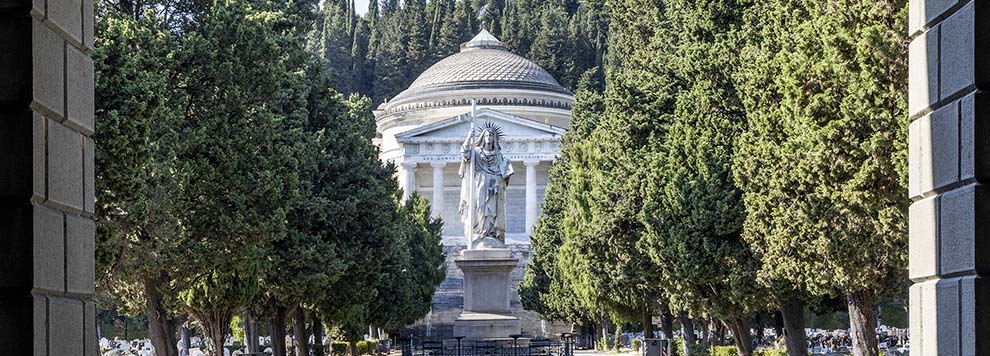Staglieno cemetery: history, sculpture, romantic suggestion

Inaugurated in 1851, the monumental cemetery of Staglieno, founded on the hill on the right bank of the Bisagno stream, is one of the most interesting places to see in the city: a true open-air museum of 19th and 20th century sculpture.
Friedrich Nietzsche, Guy de Maupassant, Mark Twain and Evelyn Waugh are just some of the historical figures, men of letters, travellers, artists, philosophers who left evidence of their visits to Staglieno cemetery and of their wanderings along the great monumental galleries.
For today’s visitors, who can also opt for guided tours, the impact remains one of absolute monumentality with a clear romantic imprint.
The classic itinerary includes well-known and beloved sepulchres, such as that of the peanut seller Caterina Campodonico and the Oneto family, guarded by the famous angel of enigmatic beauty, as well as stories of well-known and beloved figures such as Fabrizio De André, and echoes of distant and poignant love stories, evoked by figures such as Mary Constance Lloyd, wife of Oscar Wilde.
Take at least a couple of hours to stroll along the boulevards and encounter the vestiges of the many figures who have made the city famous: Giuseppe Mazzini, Michele Novaro, author of the notes of our national anthem, Fabrizio De André and Gilberto Govi.
Don’t forget to visit the Pantheon: surrounded by upper porticos connected by a monumental staircase to the lower ones, it rested on the green hill behind it – the area of the Boschetti and Valletta Pontasso – which, populated by an increasingly dense vegetation, housed chapels and monuments scattered and half-hidden in the greenery. In this area are the graves of many protagonists of the Risorgimento.
Art and history, legend and culture come together in an incredibly evocative atmosphere.



